10 - Biogeochemical cycle
1/27
There's no tags or description
Looks like no tags are added yet.
Name | Mastery | Learn | Test | Matching | Spaced |
|---|
No study sessions yet.
28 Terms
Global biogeochemical cycle
linked network of biological
and physical processes that moves nutrients through pools
within the environment
Pool
large reservoir of nutrients (e.g., oceans, atmosphere, soil)
Flux
movement of nutrients between pools (e.g., evaporation &
precipitation, carbon-fixation through photosynthesis &
respiration)
hydrological cycle - steps, pools, fluxes
evaporation condensation precipitation
Major pools: Oceans (97.5% of water), atmosphere, ice sheets.
Fluxes: Evaporation, precipitation, transpiration, runoff.
major pools in the carbon cycle
Major pools include atmosphere, oceans, land surface (soils and vegetation), sediments and rock, terrestial organism, surface watrt, marine organism
fluxes in carbon cycle
marine photosynthesis and respiration
terrestrial photosynthesis and respiration
human activty - usually unidirectional
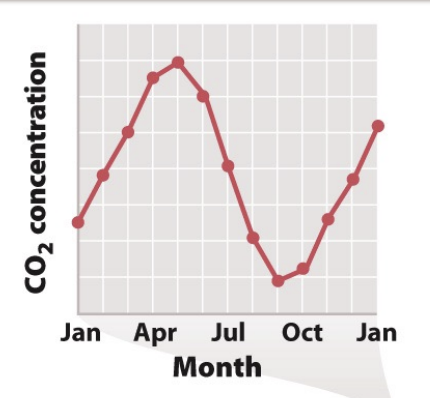
explain this
there is more land north
Respiration is fairly constant throughout the year
Photosynthesis is typically SEASONAL in north
more plants (↑ photosynthesis) in spring- summer so it starts going down
: How does carbon dioxide enter the atmosphere?
1. Geological inputs (volcanoes, mid-ocean ridges)
2. Biological inputs (respiration)
3. Anthropogenic inputs (burning fossil fuels, deforestation)
How does carbon dioxide leave the atmosphere?
1. Geological removal (chemical weathering à CO2 in
rainwater reacts with exposed rocks)
2. Biological removal (photosynthesis)
TERRESTRIAL C-CYCLE
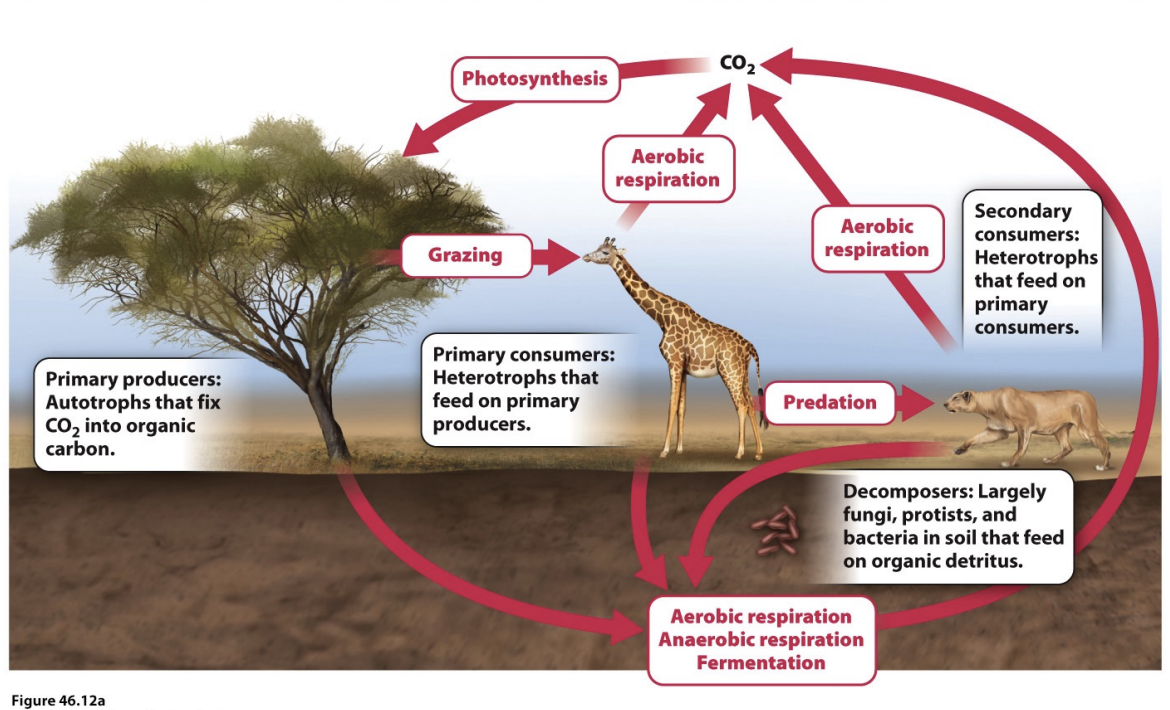
MARINE C-CYCLE
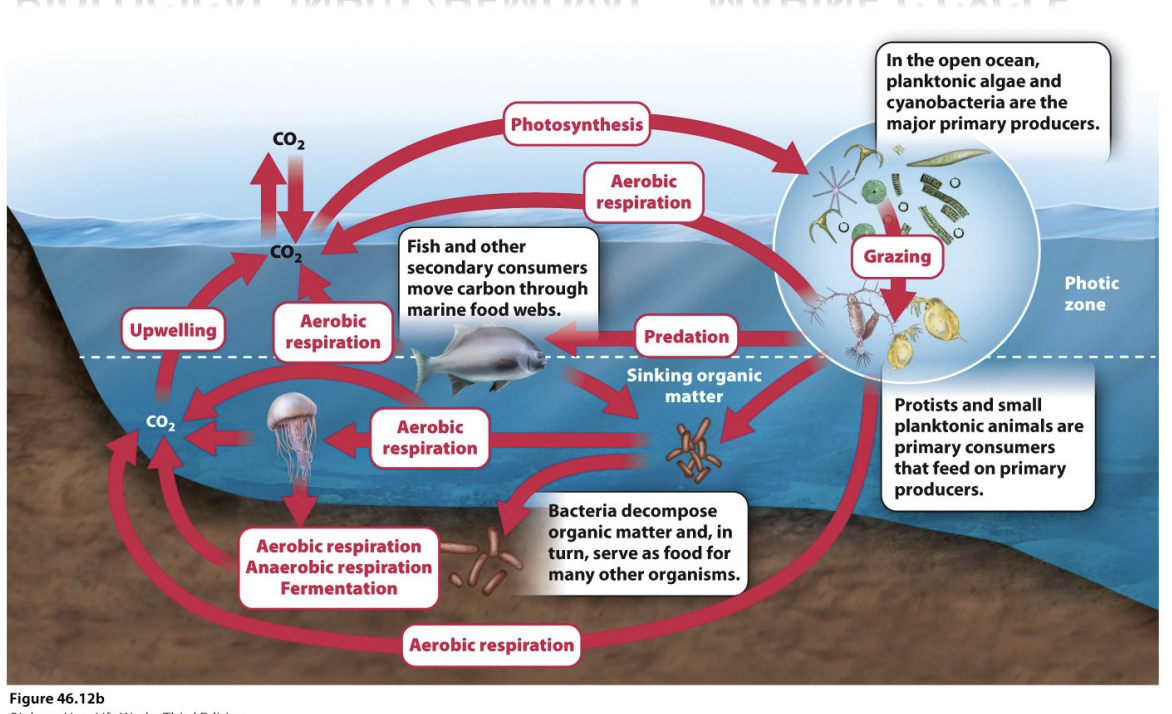
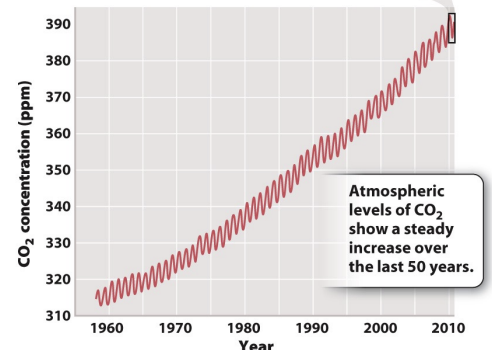
explain this
Trend: Rapid increase in atmospheric CO₂ levels since the Industrial Revolution.
Cause: Human activities, mainly burning fossil fuels and land-use changes (deforestation, agriculture).
how can you find how the atmosphere was years ago
Glacial ice, as it forms, traps air bubbles, and this ice can
last for thousands of years! We can examine ice cores to find out
what the atmosphere was like in the past.
evidence that has led us to identify human activies as a cause
Neither volcanic gases nor dissolved ocean waters have 13C/12C ratios that match the increase in atmospheric carbon
•Additional studies showed that carbon entering in the atmosphere was 14C-depleted ß modern plant vegetation contains too much 14C to be the source
Chemical analyses support hypothesis that carbon
is ANTHROPOGENIC in origin, from burning ancient
organic matter (i.e., from burning fossil fuels)
do all carbon produced by us enter atmospehere
no, only half usually stored in ocean
The largest nitrogen pool is
n2
Nitrogen fixation –
process by which some bacteria and archaea reduce N2 gas to biologically useful NH3 (this is how nitrogen enters food webs)
Assimilation -
process by which primary producers obtain biologically useful nitrogen from surroundings (NO3 - or NH3)
Denitrification –
a form of anaerobic respiration in which NO3 - is terminal electron acceptor
Nitrification –
a process in which NH3 or NO2 - are oxidized to generate energy
Rhizosphere
soil layer surrounding actively growing roots, receives carbohydrates from plants to stimulate growth of soil microbial mutualists
Rhizobium bacteria - Partner, Benefit to Plant, Benefit to Mutualist, Cost to Plant
Legume roots
Biologically available nitrogen (NH₃)
Carbohydrates (sugars) from plant
Provides energy-rich carbon
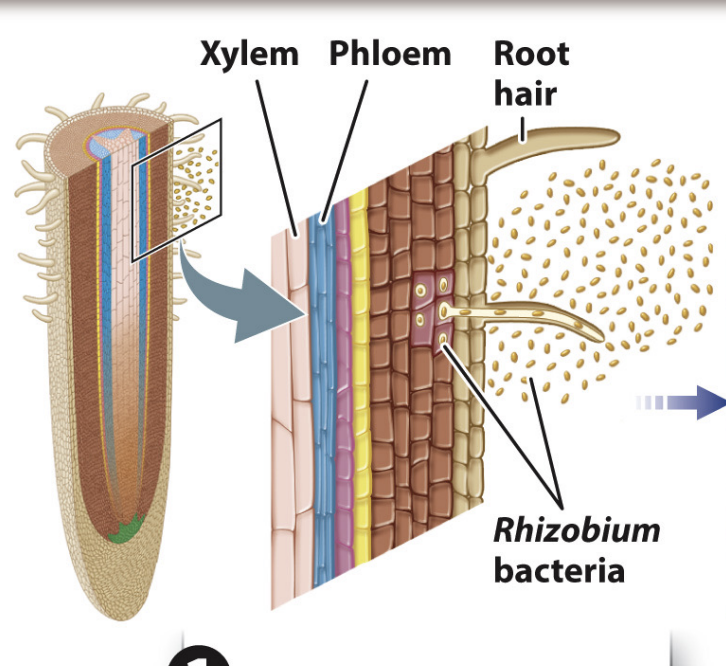
Ectomycorrhizae - Partner, Benefit to Plant, Benefit to Mutualist, Cost to Plant
netwrok of filamnet surroudning root tips
Access to soil nutrients & water
Carbohydrates
Carbon allocation to fungi
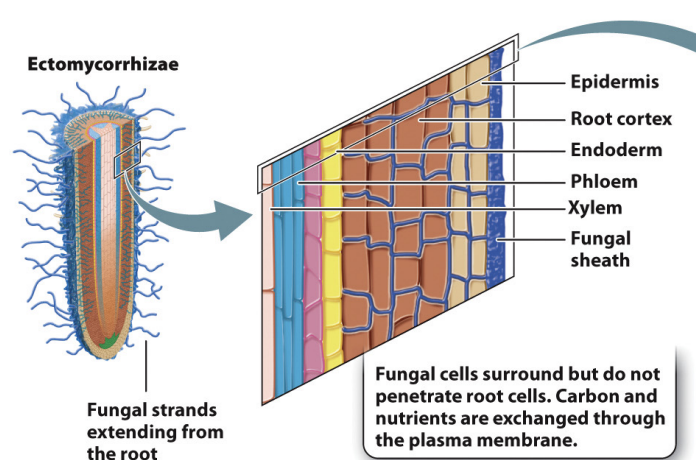
Endomycorrhizae - Partner, Benefit to Plant, Benefit to Mutualist, Cost to Plant
Most plant species
Enhanced phosphorus uptake
Carbohydrates
Energy cost in sugar exchange
Phosphorus Cycle: pools
Rocks and soil (no atmospheric component).
Phosphorus Cycle: fluxes
Fluxes: chemical Weathering of rock and uplift releases phosphate; uptake by plants; returns to soil via decomposition.
Phosphorus Cycle: entry
Entry: Uptake by roots, often facilitated by fungal mutualists.
Phosphorus Cycle: exit
Exit: Runoff into aquatic systems; sedimentation.
P leaves terrestrial ecosystems through soil erosion, leaching, and groundwater runoff, and marine ecosystems through sedimentation Can take over 100 millions years for a P atom to return to food webs once enters ocean sediments